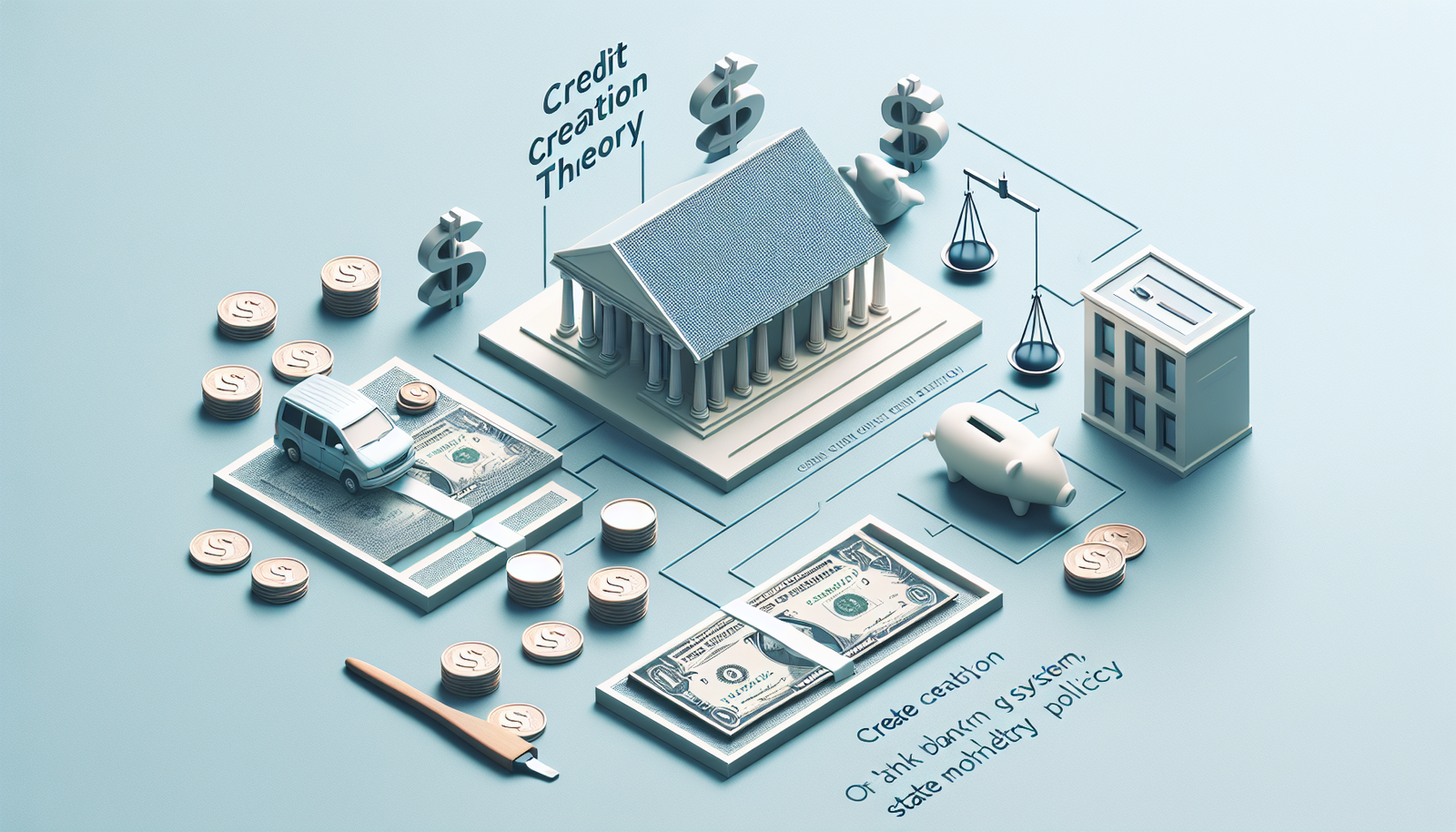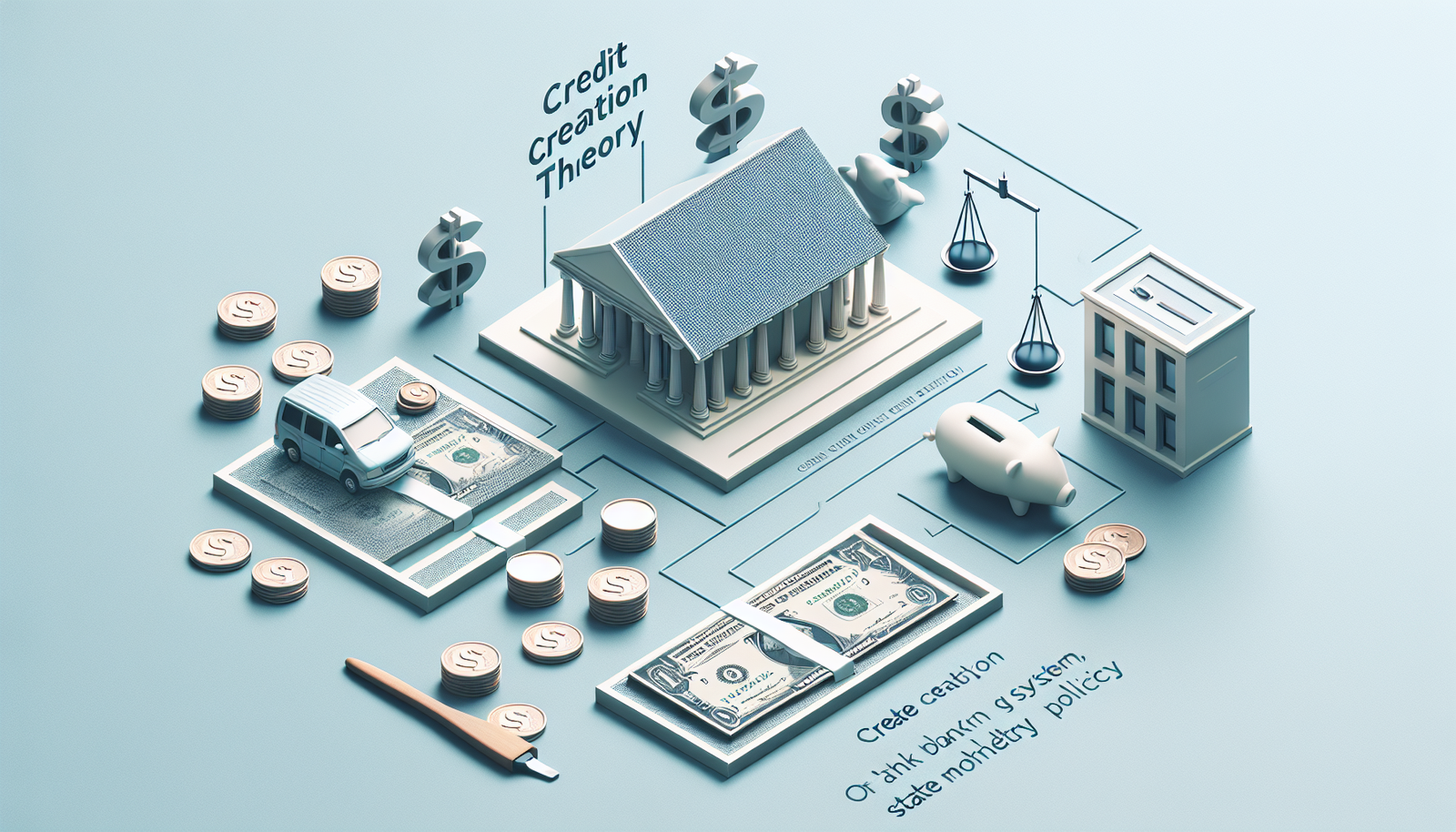
Unlock your understanding of “Credit Creation Theory” as you embark on a transformative journey into the heart of financial systems. Picture yourself as an ardent explorer, standing on the precipice of vast knowledge about how banks and financial institutions generate credit from depositors’ funds. This insightful read offers the chance to enlighten your mind with a deeper comprehension of the delicate balance upon which modern economies precariously perch. Prepare to journey through the threshold of economic literacy and into a new realm illuminated by the light of the Credit Creation Theory. As you turn the pages, anticipate an enlightening intellectual odyssey that will challenge, inspire, and forever alter your perception of banking operations.

Understanding Credit Creation Theory
Have you ever pondered on how the economy is able to be sustained and, more intriguingly, grow? The answer lies in understanding the Credit Creation Theory. This theory is built on the notion that banks can generate more credit than the initial deposits. It’s like a magic conductor waving his wand to conjure an amazing Symphony. However, unlike a symphony, the process incites both advantages and consequences for banks and the economy.
Concept of credit creation
Imagine you’re a magician, and your magic trick is turning one rabbit into five rabbits. This is almost similar to the process of credit creation, except the rabbit is money. In simpler terms, Credit Creation is when banks create new deposits or credits from reserves that don’t exist in physical monetary form.
Methods of credit creation
Transformation of deposits into loans is the crux of the method of credit creation. Once you deposit money into a bank, it doesn’t just sit there idle. Instead, the bank uses this deposit as a seed, lending a portion of it out to others. After several cycles of lending and depositing, the initial deposit has magically transformed into a much larger sum of credits, conjuring your inner magician.
Role of banks in credit creation
In the world of finance, banks are the magicians carrying out the magic trick of credit creation. Banks play a crucial role in credit creation, essentially acting as a mediator between people with surplus funds and those in need of it. They keep the economy moving, while ensuring their own survival and expansion through the interest charged on credits created.
Key Elements of Credit Creation Theory
Primary deposits
Primary deposits are the funds initially deposited into a bank. It can be imagined as the seed that a farmer plants, the commencement of the credit creation phenomenon.
Secondary deposits
The secondary deposits are equivalent to the fruit borne by the tree grown from that seed. These are the deposits created as a result of primary deposit being lent, repaid, and then re-deposited.
Process of credit creation
Credit creation is somewhat like a relay race, where the primary deposit is the baton, being passed from the lender to the borrower, then back to the lender as repayment, continuously, significantly multiplying the initial deposit.
Limits of credit creation
However, the race has a limit – called the reserve ratio or cash reserve ratio. It’s a minimum amount of deposit banks are legally required to keep in hand. This acts as a safety net, ensuring there’s enough liquidity for expected transactions and mitigating bank crises.
Historical Background and Evolution of the Credit Creation Theory
Antiquity concepts
Even in the ancient past, the idea of borrowing and lending had been seeded. Credit, back then, was often insightfully utilized by merchants as a tool for accumulating wealth.
Medieval period developments
The Middle Ages witnessed the evolution of banking practices with the advent of Goldsmith bankers who kept gold and valuables safely for their customers, issuing receipts that became widely accepted as a form of payment and thus paving the path for modern banking.
Modern Banking Approach
Modern banking has since refined the Goldsmith’s initial credit creation practice into a more pragmatic, quantitative model defined by various economic theories, regulations, innovations, and strategies.

Basis of Credit Creation Theory
Credit multiplier theory
The Credit Multiplier theory is the bedrock of credit creation. It suggests that an increase in deposits will lead to a proportionate increase in total credit, akin to multiplying rabbits, making finance a metaphorical hat of a magician!
Fractional Reserve Theory
The Fractional Reserve Theory, meanwhile, gives banks the leeway to loan out more than the amount they hold in actual deposits, keeping only a fraction of the total deposits as reserves.
Money Supply overview
Money Supply can be likened to the lifeblood of the economy. Credit creation theory is vital in pumping this blood, making sure it reaches every part of the economy.
Implications of Credit Creation
Economic implications
Credit creation has significant bearings on the economy. It incites economic growth through the multiplier effect, increasing investments and sales.
Social implications
Furthermore, socially, it improves living standards by providing funding opportunities for home buyers, startups, and students, among others.
Impact on monetary policy
Monetary policy and its tools, including interest rates and reserve requirement, significantly influence the credit creation process and its effects on the economy.
Criticisms of Credit Creation Theory
Disputes in the theory
Critics argue that credit creation theory disregards the potential for uncontrollable debt cycles or even systemic risk in the banking system.
Fallacies and misconceptions
Another misconception is that banks solely create money, while in reality, their role is as intermediaries and regulators of the money supply.
Recent criticisms
Recently, the theory has been criticized for possibly causing economic inequality, as banks may lend more to the affluent than the less fortunate.
Comparison between Money Creation Theory and Credit Creation Theory
Similarities
Both theories speculate an expansion of the total money supply, and banks play a critical role in both processes.
Differences
However, whereas money creation involves the government or Central Bank directly infusing money into the system, credit creation involves banks providing loans from deposits.
Controversial aspects
The line between the two often blurs, leading to endless debates and controversies.
Role of Central Bank in Credit Creation
Central bank as a lender of last resort
The Central Bank acts as the guardian angel of the banking system, ready to bail out banks in times of crisis, thus indirectly influencing the credit creation process.
Influence over commercial banks
Furthermore, Central Banks can control credit creation by setting reserve requirements and policy interest rates for commercial banks.
Regulation of money supply
The Central Bank also ensures that the money supply remains stable, preventing rapid inflation or deflation.
Impact of Digital Technology on Credit Creation
Internet banking and credit creation
Internet banking has made the credit creation process fast and efficient, enabling digital transactions, lending, and repayment.
Role of cryptocurrencies
Cryptocurrencies have disrupted traditional banking, its borderless and decentralized nature further complicating the control over credit creation.
Implication of FinTech companies
FinTech companies, with their innovative financial services, are complementing banks in credit creation, promising a futuristic perspective on finance.
Case Studies of Credit Creation
Implication on housing market
Credit creation has proven instrumental in boosting the housing market, allowing for loans and mortgages, helping many own homes.
The role in financial crisis
However, unrestrained credit creation played a significant part in the ‘08 financial crisis, underscored by the mortgage debacle.
Impact on economic development
Lastly, economic development is deeply tied to credit creation. From facilitating businesses to influencing GDP, the magic trick of finance continues to shape our world.
From banks to businesses, from students to homeowners, credit creation influences everyone. Its magic trick not only sustains the economy but also fosters growth. Understanding this phenomenon will undoubtedly enlighten you with the subtle artistry of finance..
Leave a Reply